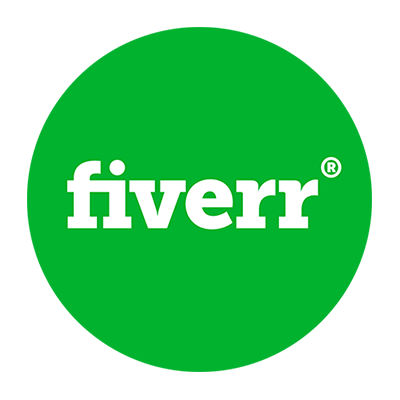
How We Started A $13K/Month Hot Sauce Online Store And Subscription Service
Hello! Who are you and what business did you start?
Hello! We are James and Erika and we run Flaming Licks. Flaming Licks is a hot sauce subscription club and chili shop based in Dorset in the UK. We send out monthly boxes containing curated hot sauces and spicy products to chili lovers around the world. Most of our members are people who love to add a spicy kick to their meals. They range from those who use hot sauce sometimes to the full-blown chili addicts.
We have finished 2019 with around 500 active members and plan to grow to 1000 members by the end of next year.

What's your backstory and how did you come up with the idea?
Our journey started back in 2014 when James decided to make his own piri-piri sauce to gift to friends and family members as a Christmas present. His sauce didn’t quite go to plan, but we gifted them anyways, and everybody loved it. From that, Sidekick sauce was born in 2015, selling at UK chili festivals and to a few retailers.
Not happy with just making sauces, we opened a chili shop in James’ hometown, Wimborne in Dorset, and then shortly after acquired the first hot sauce subscription box in the UK (named Lick My Dip at the time). The love for discovering new hot sauces in the UK and finding out about new amazing producers is what made us jump at the opportunity to take it on.
With no experience in running a subscription service, we learned on the job and researched profusely what systems to use, how to pack and everything else involved in running a subscription business.
Having had launched Sidekick sauces the year before helped as we already knew a few producers who we would end up working with over the years. After a year or so we decided to focus our strategy around the subscription business and its community and pulled out from wholesaling.
Today, James still has his day job as a Financial Consultant however curates the monthly boxes, meanwhile, Erika runs the day to day operations and marketing along with a small team at our physical shop in Dorset.
Take us through the process of designing, prototyping, and manufacturing your first product.
Sidekick was our first product. After weeks of experimenting with the recipe in our house (making our house smell constantly of vinegar), we started working with a producer in Hampshire who helped us finalize the taste and scale-up. This entailed weeks of making, taste testing, re-jigging the recipe until we were fully satisfied. Scaling up from making it in your house means the taste changes so its important to make sure it tastes the same when scaled up.
For our branding we teamed up with a fantastic branding expert, The Big Idea, to help us develop the brand, from name through to logo and branding. It meant hours of putting together mood boards and a branding strategy to finally reach the look and message we felt we represented and that spoke our values to the consumer.
When we bought the subscription service Lick My Dip, we felt the name and branding didn’t fully fit future visions, so we decided to fully rebrand. We used our trusted branding consultant who once again helped guide us to what we are now. Again, we did mood boards, swat analysis and focused on who we wanted our customers to be. We knew we wanted to be a fun brand that could appeal to people from around the world, not just the UK.
Finding the right packaging company took a lot of focus, as we wanted to find the right box which would fit all our contents, but could be secure enough not to have any breakages, and that could be printed on to really bring out our branding. After endless box samples, we finally found a supplier who started supplying us with our newly designed boxes.
Both deciding on a name and trademarking our brands was a huge investment of time, but we’re really pleased with them and we feel that effort has paid off. It would have been so easy to pay a professional to do all the work from start to finish but we would have probably spent 10-20x more.
Meanwhile we also successfully applied for a license to sell alcohol off-premises on a shoestring. Gaining this license for our physical store has helped grow our revenue through the sale of craft beers, ciders, wines and spirits to locals.
Describe the process of launching the business.
We launched Sidekick sauces at the Festival of Heat, in London in 2015. We had never sold the sauces and were overwhelmed at how successful that show was for us. It helped validate our product as well as the desire people have for hot sauce and all things spicy.
The biggest learning on our business journey has been around the need to test ideas before committing your most precious resources: time, energy and money.
Before launch, we worked with a website builder, who works closely with our brand consultant, to build and launch our first website. We wanted a website which would tell our story and in which people could buy our sauces.
We have fully financed the business ourselves, mainly through James’ software consulting work and with some debt. It’s certainly been tough on our financial situation but maintain 100% of our company and avoiding the huge effort it would take to fund-raise have certainly made it worth it.
Since launch, what has worked to attract and retain customers?
As we focus our business around the subscription club, gaining new members became our number one target. With so much competition in terms of subscription boxes available these days, it was important to target the right customer.
Firstly, the right website which functions is key! We went for a long time with a Cratejoy website that didn’t function properly, constantly went down, and pivotally, during our first Christmas, wasn’t allowing mobile users from the US to purchase (a glitch in the check-out flow). So make sure you have a stable, good looking website, with a simple checkout flow to minimize drop-offs. We currently use WordPress which has improved our ranking a lot as well as allowing a lot of flexibility to change content as and when we need to, without needing a developer to do anything.
Once we had a website that worked, our focus was to get more traffic to it. Our main source of traffic is Social Media (Facebook and Instagram). As we had little resources, we focused on maximizing traffic from those 2 platforms.
We increased our content posts and tried to post 3-4 times a week. We trialed many types of content, such as hot sauce products, recipe pictures, outrageous food content, and some basic messaging such as “behind every good cook is a hot sauce”. Over time we found that product posts were the most engaging so we tend to focus on that. We also did pay media during the Christmas period, targeting not only chili lovers but those who would be gifting to loved ones.
If you are selling things online, invest on a website that works! Optimize images so your page load is quick, research and understand SEO so you optimize for specific keywords. These will be priceless for the future of the brand.
We ran 2 campaigns; 1 for those who are hot sauce lovers on Facebook demographics, targeting the US and the UK. Our second campaign consisted of mostly females, and was a lot broader, as we were going after those who would be looking for gifts for their loved ones. This campaign had a higher CPA and it fell short of our ROI. Although paid posts do work, we have found that focusing on our company accounts with the right content is a lot more valuable.
Gaining members has been our focus since the start, but we do a few things to keep churn as low as possible. Customer service plays a big part in this. We work with a virtual assistant who responds to inquiries within hours and tries to resolve them on the same day, using Zendesk which is a fantastic tool to handle customer inquiries. Inquiries are from members not getting their boxes, or spillage or payment issues, and if you respond and resolve quickly, you will find they will likely stay with you for longer.
We send out monthly emails to our members offering free shipping for products in our online store (which would normally incur shipping rates). We also keep the conversation going with our members about new products, recipes and more. Open rates are about 50% and members feel like they get an extra perk and about 5% of them will buy extra products from our online shop because of the free shipping.
We recently worked with an SEO consultant to help make sure our website was fully optimized for the right keywords as well as opportunities for content so we could work towards becoming #1 on search engines for keywords such as the hot sauce subscription box. When you are deep down in your business, it’s helpful to get an outside perspective to find where the opportunities are.

How are you doing today and what does the future look like?
We’ve built a plan to break even this year however it has been tough so far. Being a retailer, profit margins are always going to be a challenge. Also, dealing with artisanal food producers is inspiring, but does bring some unique challenges.
Our customer lifetime value is around £20 in terms of gross profit, meanwhile, our ad campaigns have cost anywhere between £5-50 in terms of CPA.
Meanwhile, we’ve been working hard on our churn lately, we measure a 3 month rolling % churn and have improved it by 10 percentage points last year which has made a huge difference to our growth prospects.
Today our sales are around $13k/month and are split 2/3 subscription and 1/3 retail (both online and in our physical store).
Through starting the business, have you learned anything particularly helpful or advantageous?
Something James, in particular, has learned (and freely admits) is that his instincts are generally wrong! On quite a few occasions his enthusiasm and excitement have taken over and convinced him quickly what a great idea he just dreamt up. The biggest learning on our business journey has therefore been around the need to test ideas before committing your most precious resources: time, energy and money.
What platform/tools do you use for your business?
There are so many tools out there to help you with all aspects of the business which is great. Zendesk has been incredible to help us keep track of customer inquiries and to be able to offer a high standard of customer service.
Cratejoy is great in terms of handling subscriptions, customers, shipping data, dates, etc. However, the website front end is not very flexible so we would recommend using Wordpress as your front end website and using the Cratejoy checkout. WordPress also has many plugins you can use. We use SUMO to capture email addresses on our website, CartStack to email abandoned cart, Facebook Pixels (so that any campaigns we do on Facebook can be recorded correctly to see what’s working and what isn’t).
To help us with SEO, we use YOAST Premium. For anyone not experienced with SEO, they help by telling you if your page is fully optimized and more. And never forget Google Analytics, the one tool which will tell you just how well your website is performing, from traffic through to purchase. This tool is priceless for any company.
MailChimp has been our go-to email tool. Super intuitive, easy to make emails, that anyone, even without experience, could set up a template and start sending emails. You can connect MailChimp to Cratejoy so anyone who signs up will go straight to your audience on MailChimp.
To create posts and other creative content, Canva is great, especially if you are not proficient in Adobe Creative tools. You can create social media posts, for example, using their social media template. You can upload your brand font, colors, etc, so you can always be on-brand.
For our accounting, we use KashFlow. We do most of our accounting ourselves and Kashflow helps us know when and who we need to pay.
What have been the most influential books, podcasts, or other resources?
Podcasts: How I built this, to learn more about other founders and how they made it work.
Books: Shoe Dog by Phil Knight, The Story of James Dyson, Richard Branson.
Advice for other entrepreneurs who want to get started or are just starting out?
Don’t underestimate the time you need to put in. Test your idea before. You can run surveys on Google for any little detail you want to validate (we used it a lot to try out names).
If you are selling things online, invest on a website that works! Optimize images so your page load is quick, research and understand SEO so you optimize for specific keywords. These will be priceless for the future of the brand. A quick checkout process also goes a long way to minimize cart abandonment (we are still trying to perfect ours!)
Be organized with your admin. Admin starts piling up quickly and can get out of control and you end up feeling like all you do is admin.
Get an outside perspective. It’s hard to see other points of view when you are in the thick of it, so seek out mentors, other people in the business who you can chat with from time to time to make sure you are focusing on the right things.
Don’t be scared of change. Things change on a day to day basis so be ready to adapt!
Where can we go to learn more?
If you have any questions or comments, drop a comment below!

Download the report and join our email newsletter packed with business ideas and money-making opportunities, backed by real-life case studies.

Download the report and join our email newsletter packed with business ideas and money-making opportunities, backed by real-life case studies.

Download the report and join our email newsletter packed with business ideas and money-making opportunities, backed by real-life case studies.

Download the report and join our email newsletter packed with business ideas and money-making opportunities, backed by real-life case studies.

Download the report and join our email newsletter packed with business ideas and money-making opportunities, backed by real-life case studies.

Download the report and join our email newsletter packed with business ideas and money-making opportunities, backed by real-life case studies.

Download the report and join our email newsletter packed with business ideas and money-making opportunities, backed by real-life case studies.

Download the report and join our email newsletter packed with business ideas and money-making opportunities, backed by real-life case studies.








































